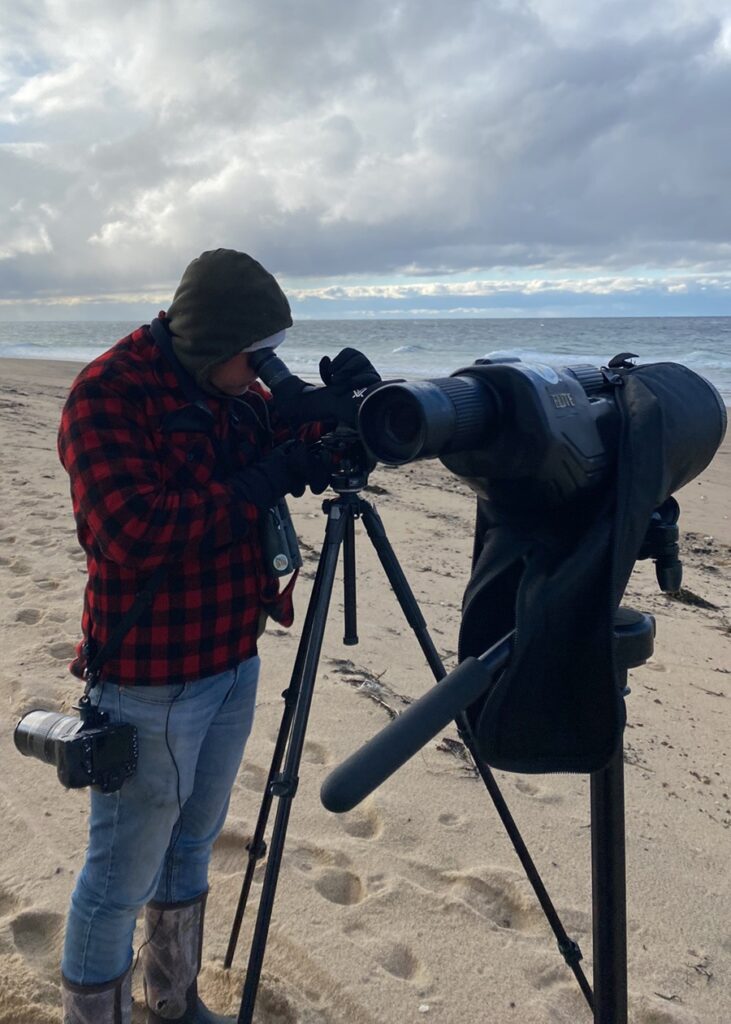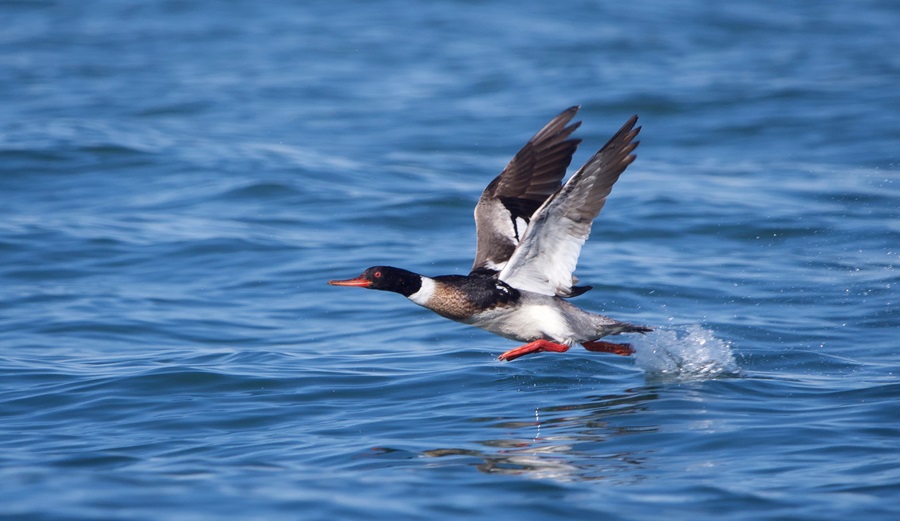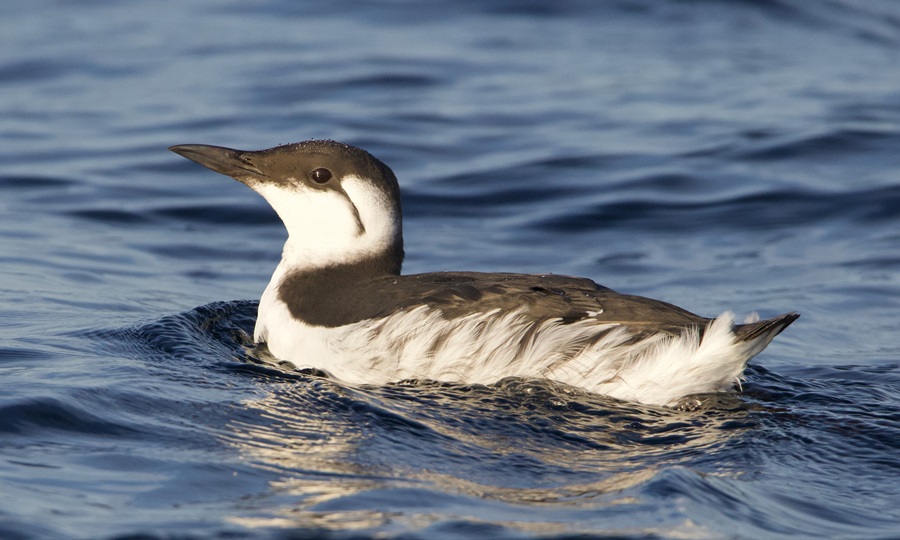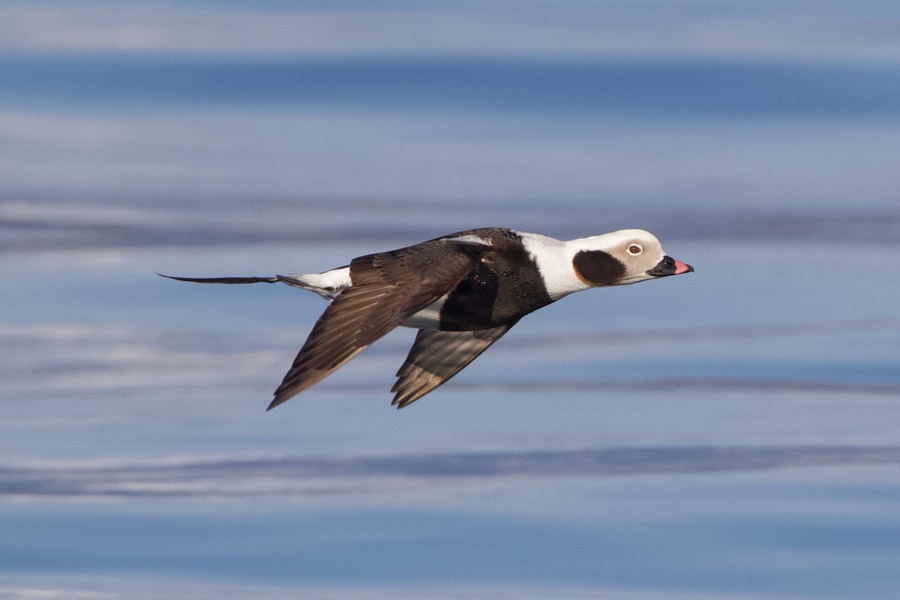PROVINCETOWN — If you ask out-of-town birders what they know about Cape Cod, they’re likely to name Race Point.
That’s because there’s a whole group of pelagic birds — those that spend nearly their whole lives out at sea — that are difficult to see from shore along most of the Eastern Seaboard. But one place you can see them is here on Outer Cape Cod, with Race Point offering an especially good vantage point.
Birds passing between the rich feeding grounds of Cape Cod Bay and the Atlantic Ocean have to navigate around the Outer Cape, bringing them very close to land. The waters directly offshore here are deep, too, allowing seabirds to behave as if they are in the middle of the ocean.

In early December, Aidan Place, a birding friend on his way home to Michigan from a season as a field biologist at Cape May Bird Observatory in New Jersey, came to visit me here with a day at Race Point on his mind. We had birded near the parking lot in years past and witnessed some pretty spectacular flights, but we knew there was much more at the point itself.
We made a plan: we bundled up, endured the walk on sand — a full hour each way — and settled in for a sunrise-to-sunset day at the best seabird-watching spot on the East Coast.
Hundreds and hundreds of red-breasted mergansers flew by us as we walked, heading out to sea from the bay. These sea ducks, with their sleek bodies, spiked crests, and thin bills, proved to be the most common bird of the day.

We were drenched in sweat by the time we reached the point to set up our scopes.
Alongside the mergansers, big flocks of ornately patterned long-tailed ducks flew by as well as smaller groups of the big mussel-eating sea ducks called white-winged scoters. We took out clickers to tally the birds accurately. They kept streaming by, leaving the bay and heading out to the open ocean.
Race Point is not an easy place to bird in winter. As the sweat dried on our bodies, the weather turned sour. The wind blew from the north, the previously sunny sky was blanketed with dark clouds, and the temperature slipped toward freezing. Then the rain began, soaking us from the right as we stared out to sea.
But we stayed put. Because as the weather got worse, the birding got better. The alcids started to appear.
In winter, a variety of birds stream past Race Point every day — ducks, gulls, loons — but what birders are there for, really, are the alcids. These are football-size black-and-white seabirds that zip by on fast wingbeats as they pass between the bay and the ocean. They look like tiny flying penguins.

The most common alcid out here is the razorbill, named for its flattened beak. These were joined by singles and pairs of common murres, which in spite of their name are a rarer sight. We also spotted flocks of dovekies, minuscule alcids that are rarely more than eight inches long. So many of these rare alcids flew by that we started a murre tally and a dovekie tally in the sand so we wouldn’t lose count. By the end of the day, I had seen more of these two species than I’d seen in my entire life up to that point.
We were lucky to find an even more unexpected alcid during this flight. Right as the rain peaked around 9 a.m., we spotted a seabird with an all-dark hood among a flock of razorbills. It was a thick-billed murre. This bird is the star attraction of Race Point; there may be no better place in North America to see it in winter.

The rain pounded down. We had bundled up, but the cold began to seep deeper into our clothes. Our scopes and binoculars were fogged and speckled with raindrops. Objectively, it was a miserable day. But this is what happens to people who watch birds: we rejoiced in what we were seeing.
By the time the rain had abated, around 11 a.m., our razorbill count had climbed well into the four digits, as had the merganser and long-tailed duck counts.
Aidan picked out a guillemot, a speckled seabird that’s usually found on rocky coasts up near Maine and our fifth alcid species of the day. Then I spotted a Pacific loon, a rare western bird, shooting by and out over the ocean.

In the afternoon, the weather got pleasantly warmer, but the birds slowed down. We kept at it, though, watching the kittiwakes and Iceland gulls mill around the point. Aidan scanned the flocks of common eiders feeding on mussels to look for rarities. He saw a young male king eider, a much rarer northern cousin of these ducks, swimming with its more abundant kin.
By 4 p.m. the sun was setting, the cold descended, and we were beat. We trekked back on the trail through the dunes, returning to the car windburned and exhausted. It was one of the best birding days I’ve had all year.
At Race Point, birds rocket by so fast that they may be in view for only 10 seconds, so you have to be “on” for hours. But it’s like standing at a slot machine: just when you feel it’s time to head home, you hit a jackpot of a sighting and decide to give it another 10 minutes.
Back home after dinner, we discussed the next day’s plans. I suggested we check out Fort Hill or Beech Forest to look for some songbirds. Aidan had another idea in mind. “I think we should go back to Race Point,” he said.
